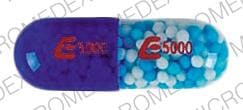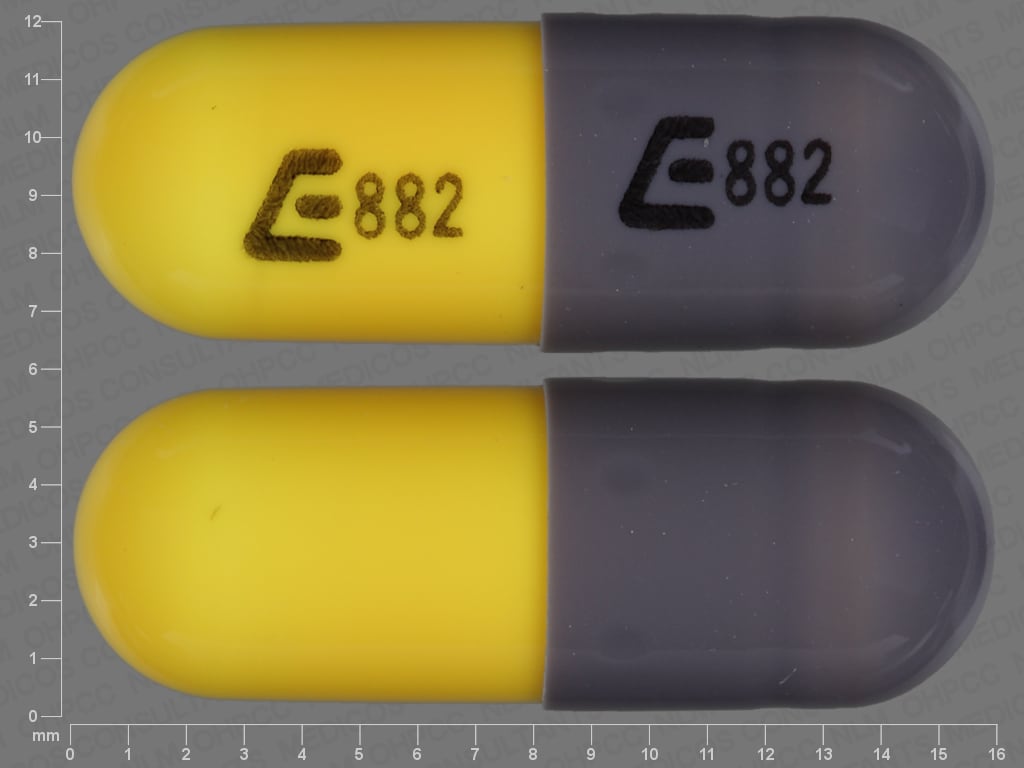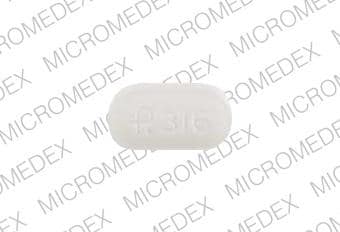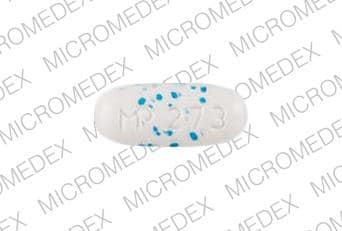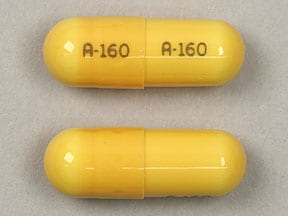Dosage Forms
Excipient information presented when available (limited, particularly for generics); consult specific product labeling. [DSC] = Discontinued product
Capsule, Oral, as hydrochloride:
Adipex-P: 37.5 mg
Generic: 15 mg, 30 mg, 37.5 mg
Tablet, Oral, as hydrochloride:
Adipex-P: 37.5 mg [contains brilliant blue fcf (fd&c blue #1), corn starch]
Adipex-P: 37.5 mg [scored; contains brilliant blue fcf (fd&c blue #1), corn starch]
Lomaira: 8 mg [scored; contains brilliant blue fcf (fd&c blue #1), corn starch]
Generic: 37.5 mg
Tablet Disintegrating, Oral, as hydrochloride:
Suprenza: 15 mg [DSC] [contains fd&c blue #1 aluminum lake, fd&c yellow #5 aluminum lake]
Suprenza: 30 mg [DSC] [contains fd&c yellow #5 aluminum lake]
Suprenza: 37.5 mg [DSC] [contains fd&c blue #1 aluminum lake]
Pharmacology
Mechanism of Action
Phentermine is a sympathomimetic amine with pharmacologic properties similar to the amphetamines. The mechanism of action in reducing appetite appears to be secondary to CNS effects, including stimulation of the hypothalamus to release norepinephrine.
Pharmacokinetics/Pharmacodynamics
Absorption
Well absorbed. Rate and extent of exposure of orally disintegrating tablets (ODT) are equivalent to capsules and tablets administered under fasting conditions. Administration of the ODT after a high-fat/high-calorie breakfast decreased Cmax by ~5% and AUC by ~12%.
Distribution
Vd: 348 L
Metabolism
Hepatic via p-hydroxylation (aromatic ring) and N-oxidation (alipthatic side chain); primarily metabolized by CYP3A4 (but does not show extensive metabolism).
Excretion
Primarily urine (62% to 85% as unchanged drug)
Time to Peak
3 to 4.4 hours
Half-Life Elimination
~20 hours
Protein Binding
17.5%
Use in Specific Populations
Special Populations: Renal Function Impairment
Exposure increases can be expected in patients with renal impairment.
Use: Labeled Indications
Obesity (short-term adjunct): Short-term (few weeks) adjunct in a regimen of weight reduction based on exercise, behavioral modification and caloric restriction in the management of exogenous obesity with an initial body mass index (BMI) ≥30 kg/m2 or ≥27 kg/m2 in the presence of other risk factors (eg, diabetes, hyperlipidemia, controlled hypertension).
Contraindications
Hypersensitivity or idiosyncrasy to phentermine, other sympathomimetic amines or any component of the formulation; history of cardiovascular disease (eg, arrhythmias, heart failure, coronary artery disease, stroke, uncontrolled hypertension); hyperthyroidism; glaucoma; agitated states; history of drug abuse; use during or within 14 days following MAO inhibitor therapy; pregnancy; breast-feeding
Dosage and Administration
Dosing: Adult
Note: Suprenza has been discontinued in the US for more than 1 year.
Note: Dosing is presented in terms of the salt, phentermine hydrochloride (not as phentermine base).
Obesity (short-term adjunct): Oral:
Capsule, tablet (excluding Lomaira): 15 to 37.5 mg/day in 1 to 2 divided doses. Individualize to achieve adequate response with lowest effective dose.
Tablet (Lomaira only): 8 mg 3 times daily. Individualize to achieve adequate response with lowest effective dose.
Orally disintegrating tablet (ODT): One tablet (15 to 37.5 mg daily) every morning. Individualize to achieve adequate response with lowest effective dose.
Dosing: Geriatric
Refer to adult dosing.
Dosing: Pediatric
Obesity (short-term adjunct): Adolescents >16 years: Refer to adult dosing.
Administration
Avoid late evening administration. Most effective when combined with a low-calorie diet and behavior modification counseling.
Capsules, tablets (excluding Lomaira): Administer before breakfast or 1 to 2 hours after breakfast. Tablets may be divided in half and dose may be given in 2 divided doses.
Tablet (Lomaira only): Administer 30 minutes before meals. Tablets are scored and may be divided in half.
Orally disintegrating tablets (ODT): With dry hands, place tablet on the tongue and allow to dissolve, then swallow with or without water. May administer with or without food.
Dietary Considerations
Capsules, tablets (excluding Lomaira): Should be taken before breakfast or 1 to 2 hours after breakfast.
Tablet (Lomaira only): Should be taken 30 minutes before meals.
Storage
Store at 20°C to 25°C (68°F to 77°F).
Phentermine Images
Drug Interactions
Acebrophylline: May enhance the stimulatory effect of CNS Stimulants. Avoid combination
Alcohol (Ethyl): May enhance the adverse/toxic effect of Phentermine. Monitor therapy
Alkalinizing Agents: May decrease the excretion of Amphetamines. Management: Consider alternatives to using amphetamines and alkalinizing agents in combination. If these agents must be used together, patients should be monitored closely for excessive amphetamine effects. Consider therapy modification
Amifampridine: Agents With Seizure Threshold Lowering Potential may enhance the neuroexcitatory and/or seizure-potentiating effect of Amifampridine. Monitor therapy
Ammonium Chloride: May decrease the serum concentration of Amphetamines. This effect is likely due to an enhanced excretion of amphetamines in the urine. Monitor therapy
Antacids: May decrease the excretion of Amphetamines. Monitor therapy
Antihistamines: Amphetamines may diminish the sedative effect of Antihistamines. Monitor therapy
Antihypertensive Agents: Amphetamines may diminish the antihypertensive effect of Antihypertensive Agents. Monitor therapy
Antipsychotic Agents: May diminish the stimulatory effect of Amphetamines. Monitor therapy
Ascorbic Acid: May decrease the serum concentration of Amphetamines. Monitor therapy
AtoMOXetine: May enhance the hypertensive effect of Sympathomimetics. AtoMOXetine may enhance the tachycardic effect of Sympathomimetics. Monitor therapy
BuPROPion: May enhance the neuroexcitatory and/or seizure-potentiating effect of Agents With Seizure Threshold Lowering Potential. Monitor therapy
Cannabinoid-Containing Products: May enhance the tachycardic effect of Sympathomimetics. Exceptions: Cannabidiol. Monitor therapy
Carbonic Anhydrase Inhibitors: May decrease the excretion of Amphetamines. Exceptions: Brinzolamide; Dorzolamide. Monitor therapy
Cocaine (Topical): May enhance the hypertensive effect of Sympathomimetics. Management: Consider alternatives to use of this combination when possible. Monitor closely for substantially increased blood pressure or heart rate and for any evidence of myocardial ischemia with concurrent use. Consider therapy modification
CYP2D6 Inhibitors (Moderate): May increase the serum concentration of Amphetamines. Monitor therapy
CYP2D6 Inhibitors (Strong): May increase the serum concentration of Amphetamines. Exceptions: FLUoxetine; PARoxetine. Monitor therapy
Doxofylline: Sympathomimetics may enhance the adverse/toxic effect of Doxofylline. Monitor therapy
Esketamine: May enhance the hypertensive effect of CNS Stimulants. Monitor therapy
Ethosuximide: Amphetamines may diminish the therapeutic effect of Ethosuximide. Amphetamines may decrease the serum concentration of Ethosuximide. Monitor therapy
Gastrointestinal Acidifying Agents: May decrease the serum concentration of Amphetamines. Monitor therapy
Guanethidine: May enhance the arrhythmogenic effect of Sympathomimetics. Guanethidine may enhance the hypertensive effect of Sympathomimetics. Monitor therapy
Iobenguane Radiopharmaceutical Products: Amphetamines may diminish the therapeutic effect of Iobenguane Radiopharmaceutical Products. Management: Discontinue all drugs that may inhibit or interfere with catecholamine transport or uptake for at least 5 biological half-lives before iobenguane administration. Do not administer these drugs until at least 7 days after each iobenguane dose. Avoid combination
Iobenguane Radiopharmaceutical Products: CNS Stimulants may diminish the therapeutic effect of Iobenguane Radiopharmaceutical Products. Management: Discontinue all drugs that may inhibit or interfere with catecholamine transport or uptake for at least 5 biological half-lives before iobenguane administration. Do not administer these drugs until at least 7 days after each iobenguane dose. Avoid combination
Ioflupane I 123: Amphetamines may diminish the diagnostic effect of Ioflupane I 123. Monitor therapy
Iohexol: Agents With Seizure Threshold Lowering Potential may enhance the adverse/toxic effect of Iohexol. Specifically, the risk for seizures may be increased. Management: Discontinue agents that may lower the seizure threshold 48 hours prior to intrathecal use of iohexol. Wait at least 24 hours after the procedure to resume such agents. In nonelective procedures, consider use of prophylactic anticonvulsants. Consider therapy modification
Iomeprol: Agents With Seizure Threshold Lowering Potential may enhance the adverse/toxic effect of Iomeprol. Specifically, the risk for seizures may be increased. Management: Discontinue agents that may lower the seizure threshold 48 hours prior to intrathecal use of iomeprol. Wait at least 24 hours after the procedure to resume such agents. In nonelective procedures, consider use of prophylactic anticonvulsants. Consider therapy modification
Iopamidol: Agents With Seizure Threshold Lowering Potential may enhance the adverse/toxic effect of Iopamidol. Specifically, the risk for seizures may be increased. Management: Discontinue agents that may lower the seizure threshold 48 hours prior to intrathecal use of iopamidol. Wait at least 24 hours after the procedure to resume such agents. In nonelective procedures, consider use of prophylactic anticonvulsants. Consider therapy modification
Methenamine: May decrease the serum concentration of Amphetamines. This effect is likely due to an enhanced excretion of amphetamines in the urine. Monitor therapy
Monoamine Oxidase Inhibitors: May enhance the hypertensive effect of Amphetamines. While linezolid and tedizolid may interact via this mechanism, management recommendations differ from other monoamine oxidase inhibitors. Refer to monographs specific to those agents for details. Avoid combination
Multivitamins/Fluoride (with ADE): May decrease the serum concentration of Amphetamines. More specifically, the ascorbic acid (vitamin C) in many multivitamins may decrease amphetamine concentrations. Monitor therapy
Multivitamins/Minerals (with ADEK, Folate, Iron): May decrease the serum concentration of Amphetamines. Monitor therapy
Multivitamins/Minerals (with AE, No Iron): May decrease the serum concentration of Amphetamines. Specifically, vitamin C may impair absorption of amphetamines. Monitor therapy
Opioid Agonists: Amphetamines may enhance the analgesic effect of Opioid Agonists. Monitor therapy
PHENobarbital: Amphetamines may decrease the serum concentration of PHENobarbital. Monitor therapy
Phenytoin: Amphetamines may decrease the serum concentration of Phenytoin. Monitor therapy
Quinolones: Amphetamines may enhance the cardiotoxic effect of Quinolones. Monitor therapy
Selective Serotonin Reuptake Inhibitors (Strong CYP2D6 Inhibitors): Amphetamines may enhance the serotonergic effect of Selective Serotonin Reuptake Inhibitors (Strong CYP2D6 Inhibitors). This could result in serotonin syndrome. Selective Serotonin Reuptake Inhibitors (Strong CYP2D6 Inhibitors) may increase the serum concentration of Amphetamines. Management: Monitor for increased amphetamine toxicities, including signs and symptoms of serotonin syndrome/serotonin toxicity (eg, hyperreflexia, clonus, hyperthermia, diaphoresis, tremor, autonomic instability) when these agents are combined. Monitor therapy
Serotonergic Agents (High Risk): Amphetamines may enhance the serotonergic effect of Serotonergic Agents (High Risk). This could result in serotonin syndrome. Management: Monitor for signs and symptoms of serotonin syndrome/serotonin toxicity (eg, hyperreflexia, clonus, hyperthermia, diaphoresis, tremor, autonomic instability, mental status changes) when these agents are combined. Exceptions: Amitriptyline; Amoxapine; ClomiPRAMINE; Desipramine; Dothiepin; Doxepin (Systemic); Doxepin (Topical); FLUoxetine; Imipramine; Isocarboxazid; Linezolid; Lofepramine; Melitracen [INT]; Methylene Blue; Moclobemide; Nortriptyline; PARoxetine; Phenelzine; Protriptyline; Tranylcypromine; Trimipramine. Monitor therapy
Sibutramine: May enhance the adverse/toxic effect of Centrally Acting Weight Loss Agents. Avoid combination
Solriamfetol: Sympathomimetics may enhance the hypertensive effect of Solriamfetol. Monitor therapy
Solriamfetol: CNS Stimulants may enhance the hypertensive effect of Solriamfetol. Monitor therapy
Sympathomimetics: May enhance the adverse/toxic effect of other Sympathomimetics. Monitor therapy
Tedizolid: May enhance the hypertensive effect of Sympathomimetics. Tedizolid may enhance the tachycardic effect of Sympathomimetics. Monitor therapy
Tricyclic Antidepressants: May enhance the adverse/toxic effect of Amphetamines. Tricyclic Antidepressants may potentiate the cardiovascular effects of Amphetamines. Amphetamines may enhance the serotonergic effect of Tricyclic Antidepressants. This could result in serotonin syndrome. Management: Monitor for signs and symptoms of serotonin syndrome/serotonin toxicity (eg, hyperreflexia, clonus, hyperthermia, diaphoresis, tremor, autonomic instability, mental status changes) and increased cardiovascular effects when these agents are combined. Monitor therapy
Urinary Acidifying Agents: May decrease the serum concentration of Amphetamines. Monitor therapy
Test Interactions
May interfere with urine detection of amphetamines/methamphetamines (false-positive).
Adverse Reactions
Frequency not defined.
Cardiovascular: Hypertension, ischemia, palpitations, tachycardia
Central nervous system: Dizziness, dysphoria, euphoria, headache, insomnia, overstimulation, psychosis, restlessness
Dermatologic: Urticaria
Endocrine & metabolic: Change in libido
Gastrointestinal: Constipation, diarrhea, gastrointestinal distress, unpleasant taste, xerostomia
Genitourinary: Impotence
Neuromuscular & skeletal: Tremor
<1%, postmarketing, and/or case reports: Acquired valvular heart disease (regurgitant), primary pulmonary hypertension
Warnings/Precautions
Concerns related to adverse effects:
- CNS effects: May cause CNS depression, which may impair physical or mental abilities; patients must be cautioned about performing tasks that require mental alertness (eg, operating machinery or driving).
- Heart failure: In a scientific statement from the American Heart Association, phentermine has been determined to be an agent that may cause direct myocardial toxicity (magnitude: major) (AHA [Page 2016]).
- Primary pulmonary hypertension (PPH): A rare, frequently fatal disease of the lungs, PPH has been reported to occur in patients receiving a combination of phentermine and fenfluramine or dexfenfluramine. The possibility of an association between PPH and the use of phentermine alone cannot be ruled out; rare cases of PPH have been reported in patients taking phentermine alone. Discontinue in patients experiencing new-onset dyspnea, chest pain, syncope, or lower extremity edema.
- Valvular heart disease: Serious regurgitant cardiac valvular disease (primarily affecting the mitral, aortic, and/or tricuspid valves) has been reported to occur in patients receiving a combination of phentermine and fenfluramine or dexfenfluramine. The possibility of an association between valvular heart disease and the use of phentermine alone cannot be ruled out; rare cases of valvular heart disease have been reported in patients taking phentermine alone.
Disease-related concerns:
- Cardiovascular disease: Avoid stimulants in patients with known serious structural cardiac abnormalities, cardiomyopathy, serious heart rhythm abnormalities, or other serious cardiac problems that could increase the risk of sudden death that these conditions alone carry. Use with caution in patients with mild hypertension and other cardiovascular conditions that might be exacerbated by increases in blood pressure or heart rate.
- Diabetes: Use with caution in patients with diabetes mellitus; antidiabetic agent requirements (eg, insulin or oral hypoglycemic agents) may be decreased with anorexigens and concomitant dietary restrictions.
- Renal impairment: Use caution in patients with renal impairment; an increase in exposure is expected. Avoid use in patients with eGFR <15 mL/minute/1.73 m2, including end-stage renal disease (ESRD) requiring dialysis (has not been studied).
- Seizure disorders: Avoid or use with caution in patients with history of seizures (Apovian 2015).
- Tourette syndrome: Use with caution in patients with Tourette syndrome; stimulants may unmask tics.
Concurrent drug therapy issues:
- Drug-drug interactions: Potentially significant interactions may exist, requiring dose or frequency adjustment, additional monitoring, and/or selection of alternative therapy. Consult drug interactions database for more detailed information.
Special populations:
- Elderly: Use caution in this age group due to the risk for causing dependence, hypertension, angina, and myocardial infarction.
Dosage form specific issues:
- Tartrazine: Some products may contain tartrazine Some products may contain tartrazine (FDC yellow #5), which may cause allergic reactions in patients with sensitivity (caution in patients with asthma or aspirin hypersensitivity).
Other warnings/precautions:
- Abuse potential: Phentermine is pharmacologically related to the amphetamines, which have a high abuse potential; prolonged use may lead to dependency. Prescriptions should be written for the smallest quantity consistent with good patient care to minimize possibility of overdose.
- Appropriate use: Phentermine is not approved for long-term use. Clinicians should carefully examine the potentially benefits against potential risks associated with use of medications in this class. Consult weight loss guidelines for current pharmacotherapy recommendations. Therapy should be used in conjunction with a comprehensive weight management program.
- Tolerance: Tolerance to the anorectic effect usually develops within a few weeks; discontinue use when tolerance develops, do not exceed recommended dosage in an attempt to overcome tolerance.
Monitoring Parameters
Weight and waist circumference every month for the first 3 months, then at 3-month intervals (Apovian 2015); blood pressure
Pregnancy
Pregnancy Risk Factor
X
Pregnancy Considerations
Use of phentermine is contraindicated during pregnancy (lack of potential benefit and possible fetal harm). Limited information is available about the use of phentermine in pregnancy (Jones 2002; McElhatton 2006). An increased risk of adverse maternal and fetal outcomes is associated with obesity; however, medications for weight loss therapy are not recommended at conception or during pregnancy (ACOG 156 2015).
Patient Education
What is this drug used for?
- It is used to treat obesity.
Frequently reported side effects of this drug
- Anxiety
- Constipation
- Diarrhea
- Dry mouth
- Trouble sleeping
- Bad taste
- Decreased sex drive
- Sexual dysfunction
- Agitation
Other side effects of this drug: Talk with your doctor right away if you have any of these signs of:
- Behavioral changes
- Chest pain
- Fast heartbeat
- Abnormal heartbeat
- Mood changes
- Tremors
- Shortness of breath
- Swelling of arms or legs
- Vision changes
- Severe dizziness
- Passing out
- Severe headache
- Signs of a significant reaction like wheezing; chest tightness; fever; itching; bad cough; blue skin color; seizures; or swelling of face, lips, tongue, or throat.
Note: This is not a comprehensive list of all side effects. Talk to your doctor if you have questions.
Consumer Information Use and Disclaimer: This information should not be used to decide whether or not to take this medicine or any other medicine. Only the healthcare provider has the knowledge and training to decide which medicines are right for a specific patient. This information does not endorse any medicine as safe, effective, or approved for treating any patient or health condition. This is only a brief summary of general information about this medicine. It does NOT include all information about the possible uses, directions, warnings, precautions, interactions, adverse effects, or risks that may apply to this medicine. This information is not specific medical advice and does not replace information you receive from the healthcare provider. You must talk with the healthcare provider for complete information about the risks and benefits of using this medicine.
